Here are some science questions from the Standards for Grades 2-5 to help you test your knowledge of the Next Generation Sunshine State Standards.
The questions are chosen randomly, so this quest will be different each time you reload the page.
* Click here to see only the most recently added questions.
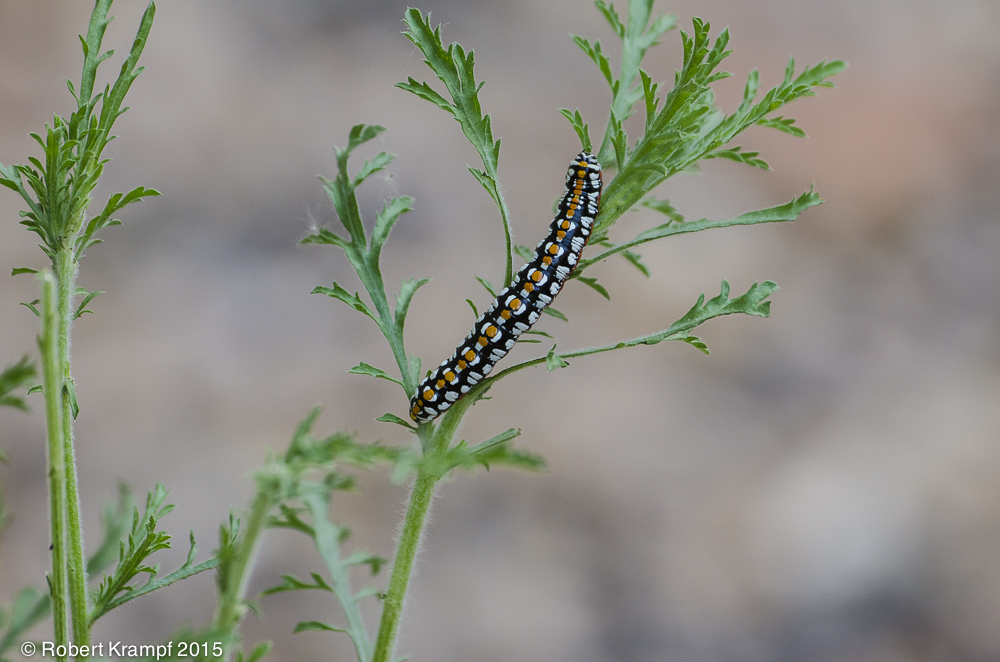
I found this caterpillar in my garden. Based on its bright colors, I decided not to pick it up. Why would it be so brightly colored?
-
To help it hide in flowers.
No. Its pattern of colors would not blend in with a flower. -
To warn away predators.
Yes! Many brightly colored animals are toxic or dangerous. They use their bright colors to warn potential predators that they taste bad, sting, or have some other characteristic that a predator would want to avoid.This is the caterpillar of a Hooded Owlet Moth. They eat the wild asters in our area, which gives them a very bitter taste that birds don't like.
-
To attract a mate.
No. Caterpillars do not mate. They must go through metamorphosis into a butterfly or moth before they can mate. -
To help it find food.
No. Most caterpillars eat plants, and bright colors would not help with that..
Click to see which state standards this question tests, and which of my videos, experiments, and other resources support that topic.
Florida
SC.5.L.17.1 Compare and contrast adaptations displayed by animals and plants that enable them to survive in different environments such as life cycles variations, animal behaviors and physical characteristics.
| Nature Watching | video, checked |
| Calling a Woodpecker | video, checked |
| Selective Smelling | video, checked |
| Seed Search | video, ClosedCaptions, checked |
| Flowers | video, ClosedCaptions |
| Onion Crystals | video |
| A Walk in the Park | video, checked |
| Review Plants-1 | practice |
| Review Adaptation-2 | practice |
| Review Adaptation-3 | practice |
| Review Adaptation-4 | practice |
| Review Adaptation-5 | practice |
| Review Adaptation-6 | practice |
Utah
UT.6.V.1.b Compare characteristics common in observed organisms (e.g., color, movement, appendages, shape) and infer their function (e.g., green color found in organisms that are producers, appendages help movement).
| Selective Smelling | video, checked |
| Onion Crystals | video |
| A Walk in the Park | video, checked |
| Thoughts on an Exoskeleton | text page, free |
| Review Adaptation-3 | practice |
| Review Adaptation-4 | practice |
| Review Plants-5 | practice |
| Review Plants-6 | practice |
| Review Adaptation-5 | practice |
| Review Plants-7 | practice |
| Review Adaptation-6 | practice |
NGSS
3-LS4-2 Use evidence to construct an explanation for how the variations in characteristics among individuals of the same species may provide advantages in surviving, finding mates, and reproducing.
| Flowers | video, ClosedCaptions |
| Who Evolved on First? | text page, free, checked |
| Review Adaptation-1 | practice |
| Review Adaptation-3 | practice |
| Review Adaptation-4 | practice |
| Review Adaptation-5 | practice |
| Review Adaptation-6 | practice |
MS-LS1-4 Use argument based on empirical evidence and scientific reasoning to support an explanation for how characteristic animal behaviors and specialized plant structures affect the probability of successful reproduction of animals and plants respectively.
| A Walk in the Park | video, checked |
| Nature Watching | video, checked |
| Calling a Woodpecker | video, checked |
| Selective Smelling | video, checked |
| Pumpkin Guts | video, free, ClosedCaptions, checked |
| Seed Search | video, ClosedCaptions, checked |
| Orange Slices | video, ClosedCaptions |
| Bacteria and Antibiotics | video, ClosedCaptions |
| Flowers | video, ClosedCaptions |
| Onion Crystals | video |
| Thoughts on an Exoskeleton | text page, free |
| How Does a Butterfly Fly? | text page, free |
| Review Adaptation-3 | practice |
| Review Plants-2 | practice |
| Review Plants-4 | practice |
| Review Adaptation-4 | practice |
| Review Adaptation-5 | practice |
| Review Adaptation-6 | practice |
| Review Plants-8 | practice |
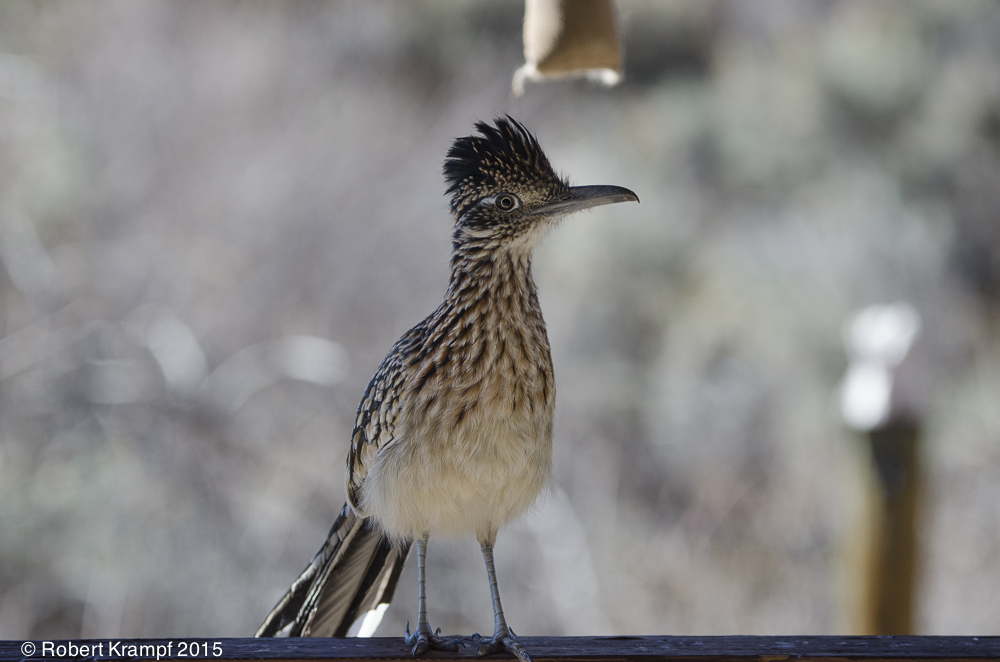
Which part of the food web does this roadrunner belong to?
-
Producer.
No. A producer captures energy from sunlight, and stores it as food. To do that, the organism needs to contain chlorophyll. -
Primary Consumer.
No. Primary consumers eat producers. In spite of what you may have seen in cartoons, roadrunners do not eat plants or bird seed. -
Secondary Consumer
Yes! Secondary consumers eat other consumers. Roadrunners are predators, and eat lizards, snakes, mice, and many other small animals. -
Decomposer
No. Roadrunners may occasionally scavenge freshly killed animals, but they are not decomposers.
Click to see which state standards this question tests, and which of my videos, experiments, and other resources support that topic.
Florida
SC.4.L.17.3 Trace the flow of energy from the Sun as it is transferred along the food chain through the producers to the consumers.
| Secondary Consumers | video, free, ClosedCaptions, Updated, checked |
| Producers | video, free, Updated, checked |
| Primary Consumers | video, ClosedCaptions, Updated, checked |
| Scavengers and Decomposers | video, free, ClosedCaptions, Updated |
| Food Web Tag | text page |
| What is a Food Web? | text page, free, checked |
| Review Food Web-2 | practice |
| Review Food Web-1 | practice |
| Review Food Web-3 | practice |
| Review Food Web-4 | practice |
| Review Food Web-5 | practice |
| Review Food Web-6 | practice |
| Review Food Web-7 | practice |
| Review Food Web-8 | practice |
| Review Food Web-9 | practice |
| Review Food Web-10 | practice |
SC.7.L.17.1 Explain and illustrate the roles of and relationships among producers, consumers, and decomposers in the process of energy transfer in a food web.
| Secondary Consumers | video, free, ClosedCaptions, Updated, checked |
| Producers | video, free, Updated, checked |
| Primary Consumers | video, ClosedCaptions, Updated, checked |
| Measuring Calories | video, ClosedCaptions, checked |
| Scavengers and Decomposers | video, free, ClosedCaptions, Updated |
| Food Web Tag | text page |
| What is a Food Web? | text page, free, checked |
| Review Food Web-10 | practice |
| Review Food Web-2 | practice |
| Review Food Web-1 | practice |
| Review Food Web-3 | practice |
| Review Food Web-4 | practice |
| Review Food Web-5 | practice |
| Review Food Web-6 | practice |
| Review Food Web-7 | practice |
| Review Food Web-8 | practice |
| Review Food Web-9 | practice |
Utah
UT.8.II.2.a Categorize the relationships between organisms (i.e., producer/consumer/decomposer, predator/prey, mutualism/parasitism) and provide examples of each.
| Producers | video, free, Updated, checked |
| Primary Consumers | video, ClosedCaptions, Updated, checked |
| Secondary Consumers | video, free, ClosedCaptions, Updated, checked |
| What is a Food Web? | text page, free, checked |
| Review Food Web-2 | practice |
| Review Food Web-1 | practice |
| Review Food Web-3 | practice |
| Review Food Web-4 | practice |
| Review Food Web-5 | practice |
| Review Food Web-6 | practice |
| Review Food Web-7 | practice |
| Review Food Web-8 | practice |
| Review Food Web-9 | practice |
| Review Food Web-10 | practice |
| Review Food Web-11 | practice |
| Review Food Web-12 | practice |
NGSS
5-PS3-1 Use models to describe that energy in animals’ food (used for body repair, growth, motion, and to maintain body warmth) was once energy from the sun.
| Secondary Consumers | video, free, ClosedCaptions, Updated, checked |
| Producers | video, free, Updated, checked |
| Measuring Photosynthesis | video, checked |
| Primary Consumers | video, ClosedCaptions, Updated, checked |
| Measuring Calories | video, ClosedCaptions, checked |
| Scavengers and Decomposers | video, free, ClosedCaptions, Updated |
| Calories: Measuring the Energy | text page, free |
| What is a Food Web? | text page, free, checked |
| Review Food Web-7 | practice |
| Review Food Web-8 | practice |
| Review Food Web-9 | practice |
| Review Food Web-10 | practice |
| Review Food Web-2 | practice |
| Review Food Web-1 | practice |
| Review Food Web-3 | practice |
| Review Food Web-4 | practice |
| Review Food Web-5 | practice |
| Review Food Web-6 | practice |
5-LS2-1 Develop a model to describe the movement of matter among plants, animals, decomposers, and the environment.
| Secondary Consumers | video, free, ClosedCaptions, Updated, checked |
| Producers | video, free, Updated, checked |
| Primary Consumers | video, ClosedCaptions, Updated, checked |
| Scavengers and Decomposers | video, free, ClosedCaptions, Updated |
| What is a Food Web? | text page, free, checked |
| Review Food Web-2 | practice |
| Review Food Web-1 | practice |
| Review Food Web-3 | practice |
| Review Food Web-4 | practice |
| Review Food Web-5 | practice |
| Review Food Web-6 | practice |
| Review Food Web-7 | practice |
| Review Food Web-8 | practice |
| Review Food Web-9 | practice |
| Review Food Web-10 | practice |
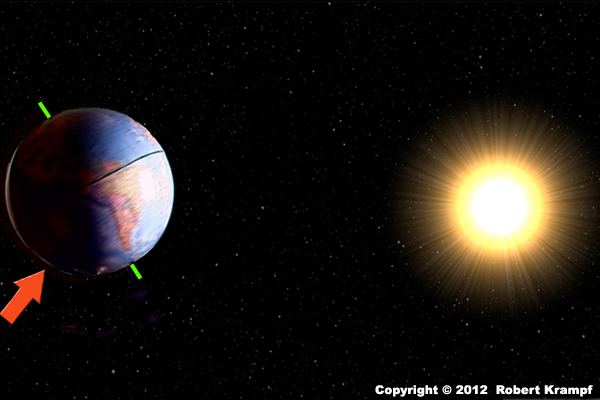
What season is the area that the arrow points to having?
-
Winter
No. In winter, the Earth's axis for that hemisphere would be pointed away from the Sun. -
Spring
No. For spring, the Earth's axis for that hemisphere would be in between pointing towards the Sun and away from the Sun. -
Summer
Yes! Even though that area is experiencing night, the Southern hemisphere is pointed towards the Sun. That means that it gets more direct sunlight and longer days. -
Autumn
No. For autumn, the Earth's axis for that hemisphere would be in between pointing towards the Sun and away from the Sun.
Click to see which state standards this question tests, and which of my videos, experiments, and other resources support that topic.
Florida
SC.4.E.5.1 Observe that the patterns of stars in the sky stay the same although they appear to shift across the sky nightly, and different stars can be seen in different seasons.
| Global Science | video, ClosedCaptions |
| Review Space-5 | practice |
| Review Space-8 | practice |
| Review Space-12 | practice |
Utah
UT.6.II.2.e Use a model to explain why the seasons are reversed in the Northern and Southern Hemispheres.
| Global Science | video, ClosedCaptions |
| Review Space-5 | practice |
| Review Space-8 | practice |
| Review Space-12 | practice |
NGSS
3-ESS2-1 Represent data in tables and graphical displays to describe typical weather conditions expected during a particular season.
| Nephoscope | video, checked |
| Pine Cone Weather | text page, free |
| Review Weather-5 | practice |
| Review Weather-6 | practice |
| Review Weather-4 | practice |
| Review Weather-3 | practice |
| Review Space-5 | practice |
| Review Space-8 | practice |
5-ESS1-2 Represent data in graphical displays to reveal patterns of daily changes in length and direction of shadows, day and night, and the seasonal appearance of some stars in the night sky.
| Finding Your Way | video, checked |
| Global Science | video, ClosedCaptions |
| Review Space-5 | practice |
| Review Space-8 | practice |
| Review Space-12 | practice |
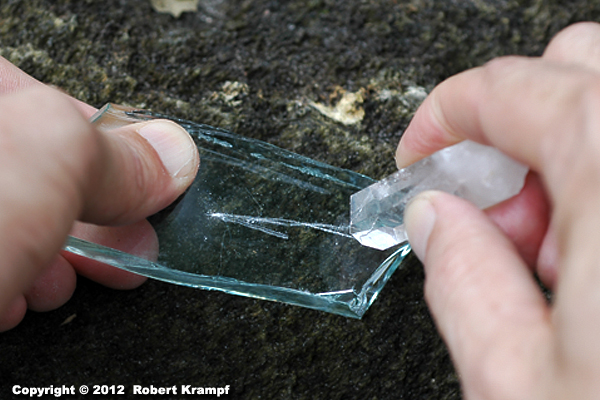
In testing this piece of quartz, I found that it would scratch glass. What property was I testing?
-
Hardness
Yes! Hardness is a substance's resistance to being scratched. With a hardness of 7, quartz is hard enough to scratch glass. -
Cleavage
No. Cleavage is the tendency of a mineral to break along planes of weakness to produce pieces with flat, smooth sides. Cleavage involves breaking, not scratching. -
Fracture
No. Fracture is a property of minerals that do NOT break along planes of weakness to produce flat, smooth sides. This involves breaking, not scratching. -
Streak
No. Streak is a test to see the color of a mineral when it is ground into a powder by scratching it on a porcelain streak plate. For streak, we are powdering the mineral, not scratching another substance.
Click to see which state standards this question tests, and which of my videos, experiments, and other resources support that topic.
Florida
SC.4.E.6.2 Identify the physical properties of common earth-forming minerals, including hardness, color, luster, cleavage, and streak color, and recognize the role of minerals in the formation of rocks.
| Identifying Minerals | video, learnalong |
| Definition of a Mineral | video, checked |
| What is a Mineral? | video, checked |
| Minerals Around You | text page, learnalong, checked |
| Review Minerals-1 | practice |
| Review Minerals-2 | practice |
| Review Minerals-3 | practice |
| Review Minerals-4 | practice |
| Review Minerals-5 | practice |
| Review Minerals-6 | practice |
| Review Minerals-7 | practice |
| Review Minerals-8 | practice |
Utah
UT.8.III.1.b Observe and describe the minerals found in rocks (e.g., shape, color, luster, texture, hardness).
| Identifying Minerals | video, learnalong |
| What is a Rock? | video, learnalong, checked |
| Definition of a Mineral | video, checked |
| What is a Mineral? | video, checked |
| Review Minerals-1 | practice |
| Review Minerals-2 | practice |
| Review Minerals-3 | practice |
| Review Minerals-4 | practice |
| Review Minerals-5 | practice |
| Review Minerals-6 | practice |
| Review Minerals-7 | practice |
| Review Minerals-8 | practice |
NGSS
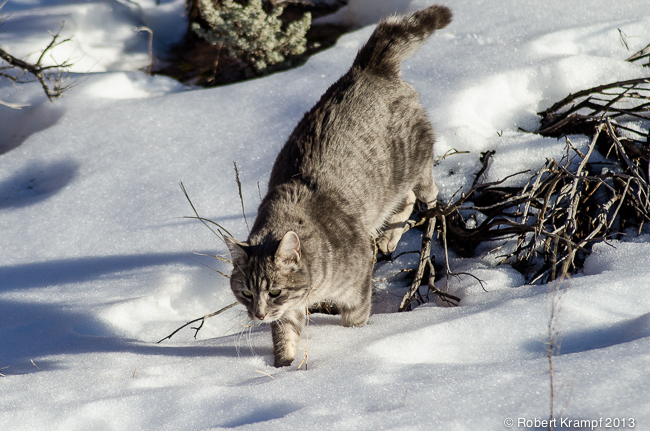
This snow fell when the temperature outside was 39°F. How can you get snow when the temperature is above freezing?
-
The wind made it feel colder, allowing it to snow.
No. While wind chill can make it feel colder, it does not actually make it colder. -
It was colder in the clouds where the snow formed.
Yes. Even when air temperatures at the surface are above freezing, the clouds can be much colder. If the air at the surface is not too warm, the snow can reach the ground without melting. -
Rain froze into snow when it hit the ground.
No. Freezing rain forms ice, not snow. Light, fluffy snow flakes form as they fall through the air, not after they hit the ground. -
This is really hail instead of snow.
No. Hail is made of large chunks of ice, not tiny flakes.
Click to see which state standards this question tests, and which of my videos, experiments, and other resources support that topic.
Florida
SC.5.E.7.4 Distinguish among the various forms of precipitation (rain, snow, sleet, and hail), making connections to the weather in a particular place and time.
| Building a Rain Gauge, part 2 | video, checked |
| Building a Rain Gauge, part 1 | video, checked |
| Photographing Snowflakes | video, checked |
| Snow Rollers | text page |
| Review Weather-6 | practice |
| Review Weather-3 | practice |
SC.6.E.7.3 Describe how global patterns such as the jet stream and ocean currents influence local weather in measurable terms such as temperature, air pressure, wind direction and speed, and humidity and precipitation.
| Nephoscope | video, checked |
| Review Weather-6 | practice |
Utah
UT.4.II.2.a Observe and record effects of air temperature on precipitation (e.g., below freezing results in snow, above freezing results in rain).
| Building a Rain Gauge, part 2 | video, checked |
| Building a Rain Gauge, part 1 | video, checked |
| Photographing Snowflakes | video, checked |
| Review Weather-6 | practice |
| Review Weather-3 | practice |
NGSS
3-ESS2-1 Represent data in tables and graphical displays to describe typical weather conditions expected during a particular season.
| Nephoscope | video, checked |
| Pine Cone Weather | text page, free |
| Review Weather-5 | practice |
| Review Weather-6 | practice |
| Review Weather-4 | practice |
| Review Weather-3 | practice |
| Review Space-5 | practice |
| Review Space-8 | practice |
MS-ESS2-5 Collect data to provide evidence for how the motions and complex interactions of air masses results in changes in weather conditions.
| Cloud Types | video |
| Nephoscope | video, checked |
| Cloud Formation, part 1 | video, ClosedCaptions, checked |
| Pine Cone Weather | text page, free |
| Review Weather-1 | practice |
| Review Weather-2 | practice |
| Review Weather-6 | practice |
| Review Weather-4 | practice |
| Review Weather-3 | practice |
